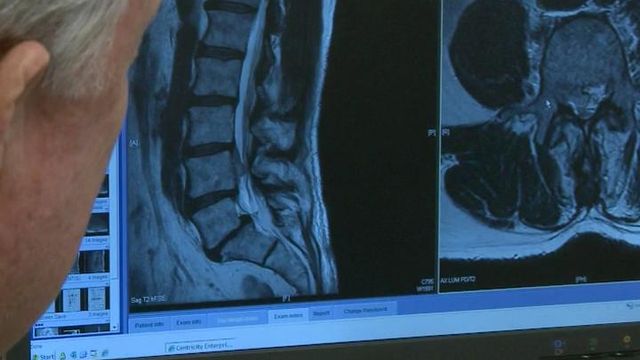Duke Spine Center changes location to ease patient pain
About eight out of 10 Americans will experience mild to severe back pain at some point in their lives, and Duke University's Spine Center recently relocated to make frequent visits with doctors and therapists a little easier on the back.
Posted — UpdatedThe Spine Center moved from the very back of the clinic building into the old cancer clinic, located behind the front lobby, and combined all back pain-related specialists into one place.
It's been a positive change for 60-year-old Pete Shankle, who has been coaching baseball in the Durham area for 30 years. Severe back pain was interfering with his work, he said, so he visited the Spine Center at its old location.
"(I had) tremendous back pain and pain, numbness down the leg," Shankle said. "I'd have to stop a couple of times and relax a little bit before I could get to (the Spine Center)."
"It made it very difficult for patients to navigate and to reach us," said Duke neurosurgeon Dr. Carlos Bagley.
After rounds of physical therapy and steroid injections, doctors found that a fragment of the disc between Shankle's vertebrae had broken off.
"That was putting a tremendous amount of pressure on the nerve root that's passing through there," Bagley said.
The procedure to remove the fragment used to involve a large incision and stripping muscle from bone, but specialists at the Spine Center are making great strides toward better care.
"Now the incision for this procedure is about a centimeter and a half," Bagley said.
After 45 minutes on the operating table and one night recovering in the hospital, Shankle was able to return to his active lifestyle.
"From the time I got up, there was no pain," he said.
He goes to physical therapy to regain muscle strength, but he's back on the baseball field.
"(I'm) back to being me and back to being active again," he said.
Age and genetics are the greatest risk factors for back pain, doctors say, but lack of exercise and excess weight can also contribute to the problem. Jobs that involve heavy lifting, standing too long or sitting in chairs with poor back support can put people at risk for back pain, too.
• Credits
Copyright 2024 by Capitol Broadcasting Company. All rights reserved. This material may not be published, broadcast, rewritten or redistributed.





